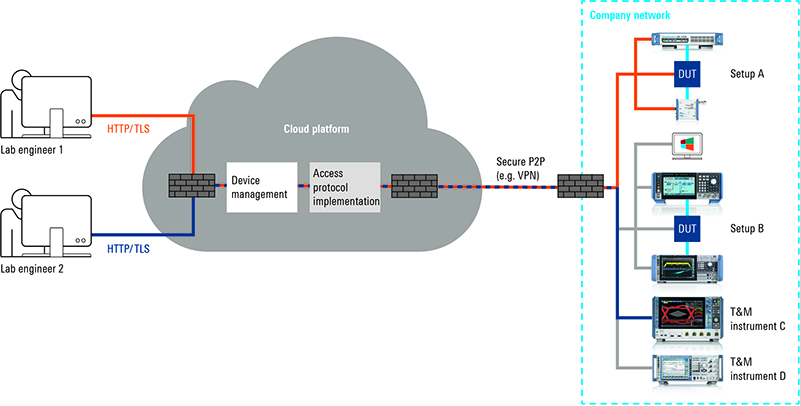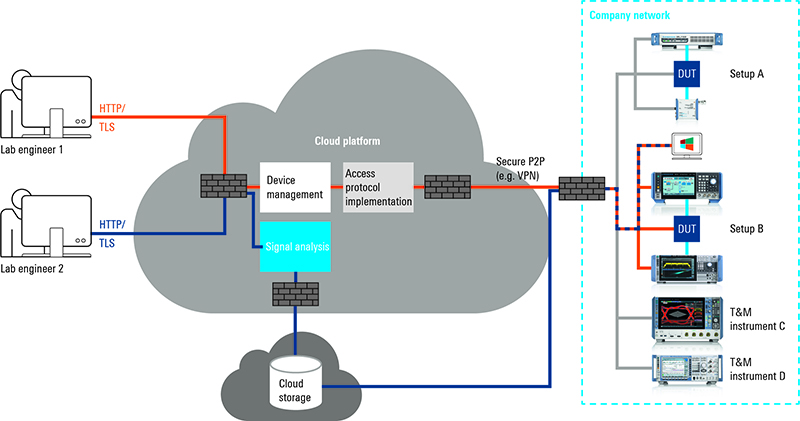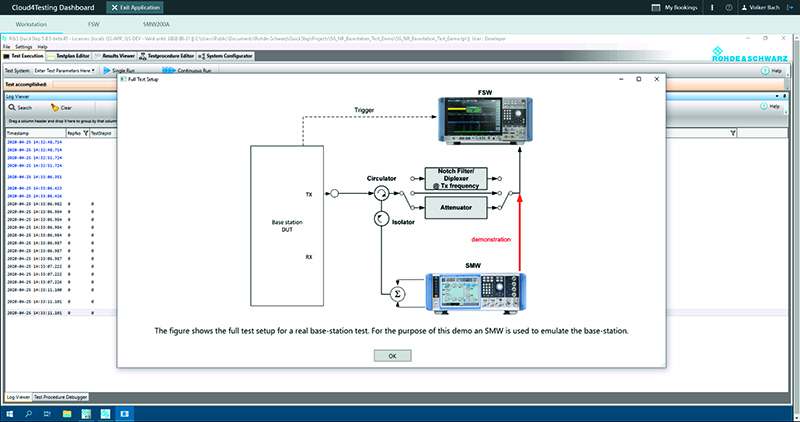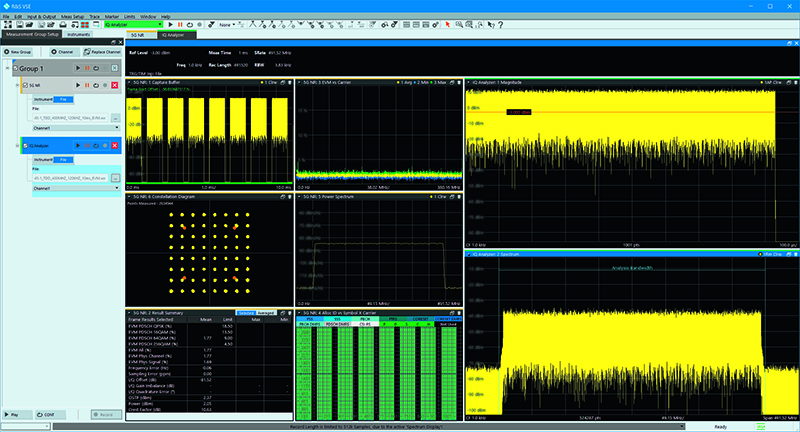Bringing the test lab to your home office
Many employees have to work at home due to the corona pandemic. This is rarely an option for engineers who need constant access to test lab equipment. However, there are workarounds. Remote control of test equipment has been standard practice in labs and system houses for many decades.
Nowadays even low-cost devices have the necessary interfaces, at least as options. Top-end devices often have built-in web servers, allowing them to be operated remotely from any browser.
All that is needed is the IP address, and the device must be accessible online. For remote unattended measurement stations with a static setup, remote access and operation is already common practice. In all cases, it is important to have effective access protection with authentication mechanisms.
This is not a problem in a protected lab environment, where remote control capability is often used for convenience to avoid having to constantly go back and forth between the workplace and a test lab located elsewhere.
What these scenarios have in common is that they are one-off special solutions that have to be reconfigured for each application. For those who want to take a broader approach to remote control of test equipment and make it a workable standard practice, a cloud based solution is an obvious approach.

Collaborative measurement via the cloud
Everything as a service (EaaS) is the latest trend, and it is becoming more and more popular. Users of such services, most of which are based on cloud technology, save on capital expenditures because they do not have to maintain the underlying infrastructure and only pay for the services they actually use.
In addition, these services are usually highly scalable, so users can count on the required capacity being available. A prerequisite for moving a service to the cloud is that it can be virtualized. At a virtual sales counter, the user simply books a service based on type, time, scope and quality. The cloud management system allocates the necessary resources.
Such systems, which are typically offered by large cloud operators for various tasks, can also be set up on a smaller scale for test and measurement services. These differ from typical software as a service (SaaS) solutions with regard to the type of service and the resources. A company that wants to virtually pool all or a part of its T&M equipment to make it accessible companywide from any location only has a limited number of each type of T&M instrument in its portfolio, and unlike a server, each instrument can only be used for one measurement task at a time.

Scalability is not the main consideration here. However, collaboration and remote access are increasingly important and necessary – now more than ever.
A helpful soul on site has to provide the connection. In many cases, the cloud users will do this step themselves whenever possible, and then carry out their analyses remotely. In extreme cases, instruments and users are in different countries or even different continents, for example in a collaborative development project. Then each user will have to find a workable solution based on the situation and task.
Access is possible via any web browser. TLS encryption on the web ensures a secure connection with the cloud. Typical for the cloud, the system includes a device management service that prevents multiple use of devices and enables times to be reserved. You can book individual devices or preconfigured device groups, which are managed via a local control computer that is also used to exchange data with the setup, e.g. to upload waveforms or script files.
With devices that support access via the RDP or VNC remote desktop protocols, an access protocol translation service sets up the connection. Then the data stream flows from the cloud platform through a dedicated point-to-point communications channel, for instance a secure VPN tunnel, to the remotely controlled hardware.
In order to extend the possibilities for measurements based on the division of labor, a cloud storage component can be added to the Fig. 1 setup (Fig. 2). This also makes it possible to separate the collection and analysis of measurement data. For example, one engineer can execute the measurements and send the data to cloud storage, while a second engineer performs the software based analysis at a convenient time from any location.
R&S Cloud4Testing
This use case – cloud based measurement data analysis – is supported by the new R&S Cloud4Testing SaaS that is available to the public as a paid service at www.rohde-schwarz.com/cloud4testing (all products are also available as free trials).

The service currently offers analysis packages for various mobile communications standards, as well as general transient and pulse analysis packages (Figs. 3 and 4). Other packages are in preparation.
The ‘large’ cloud solution for instrument access is worth considering for companies that want to make some or all of their T&M equipment conveniently available online for collaborative work, customer demos, training courses, better resource utilization and other reasons. As a reliable partner, Rohde & Schwarz can assist in the custom implementation of this kind of cloud, if desired with connection to a cloud storage system as shown in Fig. 2.
Rapid progress is being made in the virtualization of our work environments. A T&M cloud is fully aligned to this trend and can prove to be a valuable or even indispensable tool, even in non-pandemic times.











